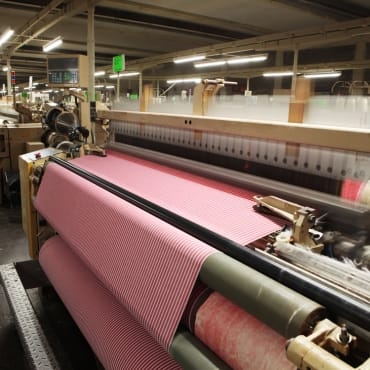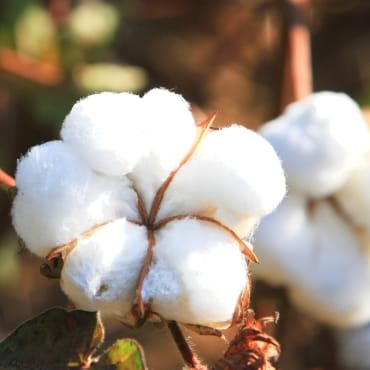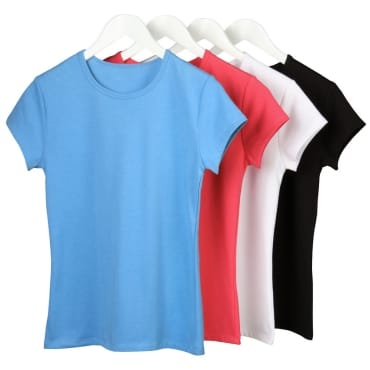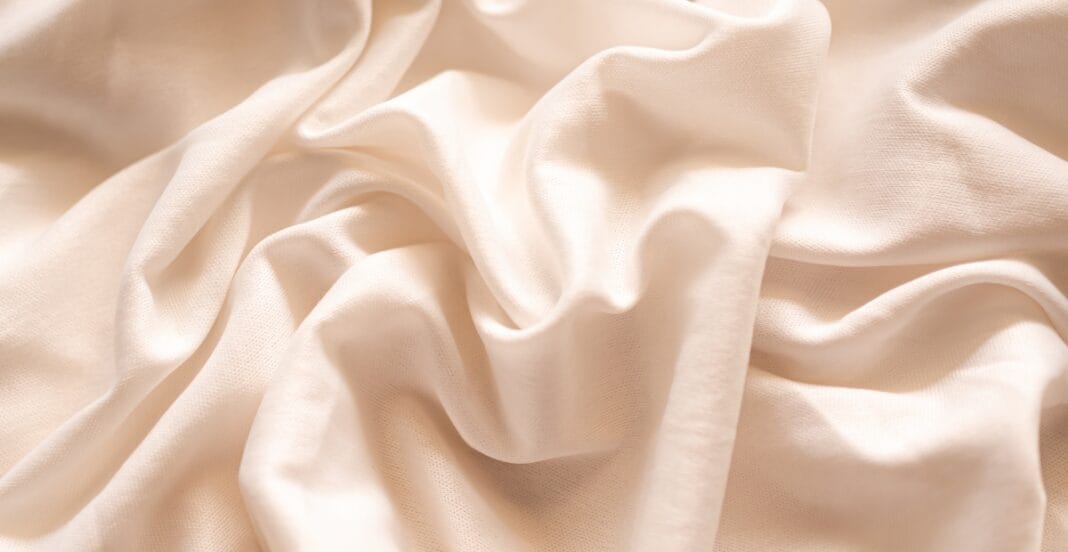In case you didn’t know, not all cotton is created the same. Some types may feel a bit rough while others wrinkle too quickly. One form of cotton that really does stand out for comfort and durability is combed cotton fabric. It is soft to the touch but surprisingly strong. Combed cotton bed sheets feel smooth, but last through countless washes. If you want something reliable when shopping for clothes, bedding, or fabric to sew with, combed cotton fabric could be the way to go.
Many people recognize the name but don’t fully understand what makes this cotton special. Why is it called combed cotton? What separates it from regular cotton or natural fiber? In this post, you will learn everything about combed cotton, including its feel like, how it’s made, and where it’s best used.
Table of contents
- Combed Cotton Fabric: What Makes It Unique
- How Combed Cotton Fabric Is Made
- Combed Cotton Fabric and The Cotton Feel
- Combed Cotton vs Regular Cotton: A Difference That Can Be Easily Noticed
- Why is Combed Cotton Fabric so Durable
- Uses of Combed Cotton Fabric
- Combed Cotton Versus Other Natural Fabrics
- How to Care for Combed Cotton Fabric
- Conclusion
- FAQs
Combed Cotton Fabric: What Makes It Unique
Combed cotton fabric is more than just soft cotton. Unlike other forms of cotton, it does come with a refined process. Comb cotton is made when threads are pre-spun into yarn and combed using fine brushes. These combs take away impurities, rough bits, and short fibers, leaving only long, straight strands.
This step is very important. It smooths the texture of combed cotton fabric. It also protects the fabric’s strength and durability over time. The yarn has less ends that stick out. This results to a lower risk of the fabric fraying, tearing, or pilling.
Because of these factors, combed cotton maintains an impeccable appearance and a luxurious feel. It is more pleasant to the skin, especially in T-shirts, bed sheets, or any other textile that rests against the body. This is why it is often used for products that require comfort as well as enduring wear and tear.

How Combed Cotton Fabric Is Made
The combed cotton journey starts in the field. The cotton plants grow into fluffy white bolls which are then picked and sent out for processing. There are a few steps to take before cotton gets transformed into fabric.
The initial step involves ginning which includes removing seeds and bigger pieces of debris. After that, the cotton fibers undergo carding which is a brushing process that aligns and organizes the fibers creating a fluffy sheet know as a sliver.
For standard cotton fabrics, the process stops at this stage. However, it is different for combed cotton which goes through one extra step. It is combed with fine-toothed brushes which extract weaker shorter fibers. These substandard materials are often repurposed into lower allot materials.
What’s left are the most lengthy, powerful, and cleanest fibers. These are spun into yarn and woven or knitted into combed cotton fabric. The stronger, smoother, and more consistent material than the basic cotton is a result of undergoing these processes.

Combed Cotton Fabric and The Cotton Feel
You will be surprised by the smooth touch of this fabric because the first thing that will catch your attention is the comb cotton. It has a smooth texture because the fibers are closely knit and flat. Unlike the traditional fabric, combed cotton does glide on the skin without having the fuzz.
In comparison, clothing that is made using combed cotton tends to feel light but combed cotton being dense will never flimsy. That’s one of the best features of combed cotton because it breathes well and keeps skin cool while feeling strong.
You will notice the difference after some washes. While the regular cotton becomes rougher, combed cotton maintains its softness. Many luxury brands adapt this method for their premium products because tight fibers prevent pilling and reduce friction over time.
Combed Cotton vs Regular Cotton: A Difference That Can Be Easily Noticed
Even though both types Combed Cotton and Regular Cotton originate from the same plant, they distinctly differ in how they feel and perform. Regular combed cotton makes use of a mixture of short and long fibers. Because it is not combed it keeps impurities and weak threads. This causes the fabric to not be smooth and more likely to break.
In contrast, combed cotton fabric feels softer right from the start. It lasts longer. It doesn’t wear out as quickly as other cotton fabric, making it more durable. Also, the lack of short fibers means fewer chances of seams coming undone, forming lint balls and fraying.
But we cannot say that combed cotton has no value. It is more cost-effective and breathable in nature. However, combed cotton tends to be more effective if one wants comfort and requires long-term used. Combed cotton does outperform regular cotton in both touch and quality.
Why is Combed Cotton Fabric so Durable
Combed cotton fabric is able to prove why it has such strong cotton. Being only made of long fibers prevents wearing down easily. It also results in weaker spots and the fabric does not need to cut or fade.
It also retains its structure, so shirts don’t droop and sheets don’t sag. The fabric recovers after being washed. Even the stitching is more secure, as the fabric has more resistance to fraying at the seams.
If you’ve ever owned a basic cotton T-shirt that looked worn after a few washes, the answer is combed cotton. Combated cotton is specifically designed for prolonged use and maintaining its aesthetic over time.
Uses of Combed Cotton Fabric
Combed cotton fabric shows up in a number of products that we use daily. In fashion, it’s used for T-shirts, shirts, leggings, and pajamas. These garments are also resistant to fading in color.
It’s also found in home products such as bedsheets, pillowcases, duvet covers, and bath towels. These items are soft and gentle on the skin while remaining durable through repeated washing.
Combed cotton is also a popular choice for baby clothes and children’s wear. Parents value it for its softness because it will not irritate sensitive skin. But the best part is that the durability means younger siblings can enjoy them as hand-me-downs.
Some luxurious robes, undergarments, and even socks are made from combed cotton. It is not only about the appearance but also how it feels and the length of use.

Combed Cotton Versus Other Natural Fabrics
While combed cotton does well against other popular textiles, it also competes well against them. For example, it’s softer and less crisp than linen. Linen has a fresh, clean feeling, but it wrinkles easily. Cotton is smooth and flexible unlike its cousins that tend to maintain wrinkles.
When placing linen against bamboo fabric, bamboo is smoother but more fragile with washing. Combed cotton stands the test of time. In comparison to bamboo, combed cotton keeps its strength.
A combed cotton product isn’t always organic but various organic cotton counterparts do exist. It is a plus that these products now come from certified organic sources as it provides softness, strength and the gentle touch of nature.
Every material comes with an advantage, but in this case, we find a compound of comfort and durability alongside easy maintenance.
How to Care for Combed Cotton Fabric
Combed cotton fabric is easy to care for. Just remember combed cotton has to be washed in cold or warm water. This helps prevent fiber damage and shrinking. Using non-bleaсh gentle detergent helps too!
Set the dryer to low heat if you wish to machine dry. High heat will break down the fibers. For those who prefer air drying, your garments will last even longer.
To prevent wrinkles, take out the cloth from the drier while it is still a little wet. If needed, iron on low heat. You will discover that combed cotton requires less ironing compared to linen or raw cotton.
Do not use soft fabrics. These settle on the fibers and stiffen its suppleness. Instead, add a little white vinegar during the rinse cycle. It helps the fabric remain clean and supple without residue.
Conclusion
Combed cotton fabric has that quality that you can feel. It is smoother than other cotton types. It is more durable. And it workds even better for you with each use or wear. Whether you intend to buy clothes or sheets or even fabric for tailoring, this cotton is sure to meet your expectations.
It meets expectations in every respect; comfort, appearance and performance. It goes without saying that guarding it does not require undue effort. Simply wash the fabric, put it on and enjoy the experience. It is ideal in day to day living while also being exquisite enough to be used for special items.
Switch to combed cotton fabric if you’re fed up with coarse cotton or fast fading fabrics. It is easy on the body, soft, strong, and durable. Your wardrobe along with your skin will be grateful.
FAQs
It’s made from cotton fibers that have been combed to remove short threads and impurities.
Yes. It’s softer, stronger, and lasts longer due to its clean, long fibers.
Absolutely. It’s easy to cut, pin, and stitch, making it ideal for garments and home décor.


